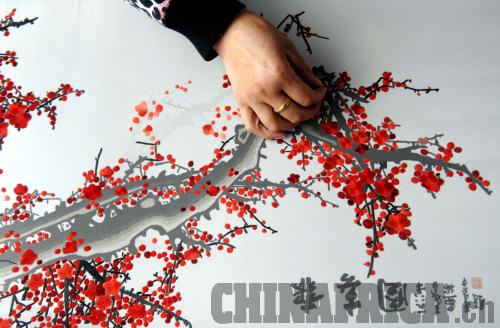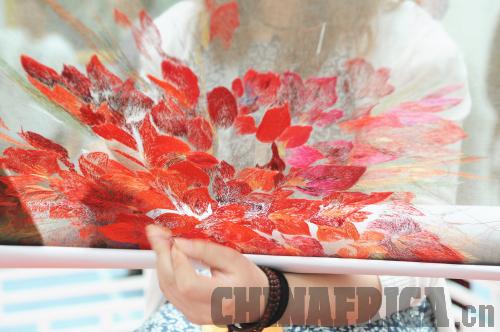|
|

|
|
TIMELESS ART: Chinese embroidery is still popular after thousands of years (XINHUA) |
Chinese embroidery is one of the most famous traditional handicrafts in China, and around the world.
With its long history and classical elegance, Chinese embroidery has become a symbol of national culture. From the magnificent dragon robes worn by emperors in ancient times to the popular embroidery in fashion today, embroidery brightens our lives and culture.
The basic embroidery technique entails pulling colored strings with a needle to stitch previously designed patterns on the item. Clothes, purses, shoes, banners, screens are among the items that can be embroidered.
In Chinese tradition, only women embroidered, and embroidery was considered a basic skill for ancient Chinese women. During those times, people believed that embroidery was a good pastime to which women could devote their intelligence and passion.
Chinese people like to embroider different things to show their hopes and aspirations. Tiger hats are usually presented to boys and lotus hats are for girls. Two butterflies are usually a symbol of romantic love, peaches symbolize longevity and coins symbolize wealth and prosperity.
As a folk art, Chinese embroidery has had a long history since the Shang Dynasty (1600-1046 B.C.). It is closely connected with traditional Chinese silkworm raising and filature. China is the first country in the world that discovered and made use of silk. The production of silk thread and fabrics gave rise to the art of embroidery. Thus, Chinese embroidery is also known as Chinese silk needlework.
Chinese embroidery is very popular among local people, and different areas have different embroidery styles. There are four major regional styles of Chinese embroidery - Su embroidery from Jiangsu Province, Xiang embroidery from Hunan Province, Yue embroidery from Guangdong Province and Shu embroidery from Sichuan Province. Each has its own distinctive features.
Among them, Su embroidery is the most famous. It is crafted in areas around Suzhou City in Jiangsu Province, and enjoys a history of more than 2,000 years. It is well known for its elegant colors, beautiful patterns, a variety of stitches and perfect craftsmanship. Su embroidery is mainly used in costumes and for decorations at home, adding both decorative and practical value, according to Huang Chunya, an inheritor of Su embroidery.

The double-face embroidered cat is the representative work of Su embroidery. The artist splits the hair-thin colored silk thread into filaments, and uses them for embroidering. A cute and mischievous-looking cat appears on both sides of the finished artwork. The most difficult part of the task is sewing the cat's lively eyes. Silk filaments of more than 20 colors are used to give brilliance and luster to the cat. The embroidered works have become increasingly complex and exquisite in recent years.
In addition, among Chinese ethnic groups, Bai, Bouyei and Miao people are also known for their embroidery skills. Their embroidery often uses sharp contrast of color and traditional design to express a mysterious flavor, while embroidered Thangka, a kind of scroll painting mounted on silk, by Tibetans shows their passion in religion.
An exhibition of contemporary Chinese embroidery artworks sponsored by the Chinese National Academy of Arts was held at Chinese Museum of Women and Children in Beijing on November 18-28, 2011. The selected exhibits are the best artworks of over 100 prominent artists, and the exhibition displayed four major regional styles of Chinese embroidery.
Today most of the handiwork of Chinese embroidery has been replaced by machinery, but some very sophisticated and precious products are still hand-made. As a carrier of national culture, Chinese embroidery is far more than simple needlework. |